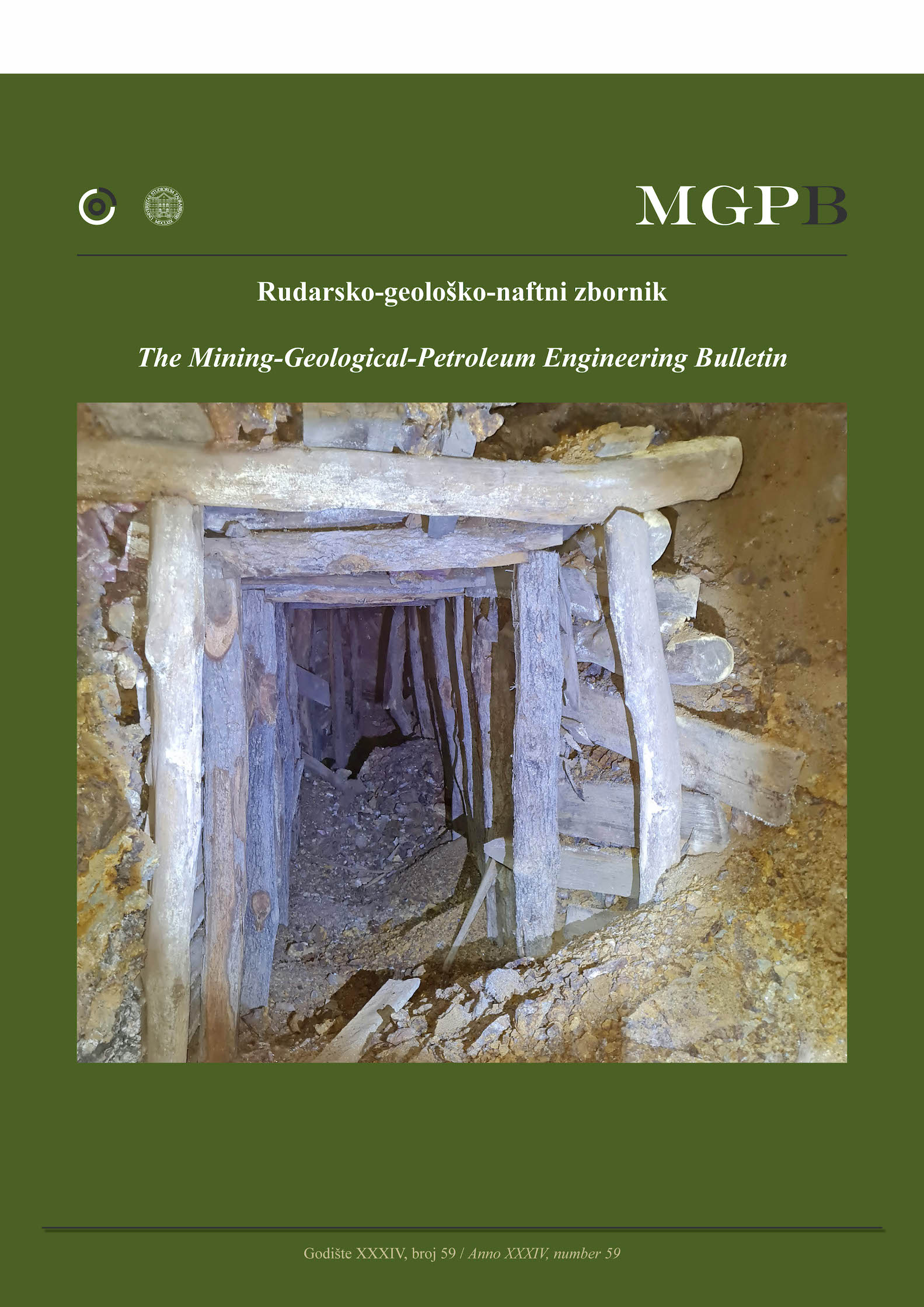Estimation of rock joint trace length using support vector machine (SVM)
DOI:
https://doi.org/10.17794/rgn.2022.3.5Keywords:
Rock Exposure, Joint Trace Length, Scanline Sampling, Support Vector MachineAbstract
Jointed rock masses modeling needs the geometrical parameters of joints such as orientation, spacing, trace length, shape, and location. The rock joint trace length is one of the most critical design parameters in rock engineering and geotechnics. It controls the stability of the rock slope and tunnels in jointed rock masses by affecting rock mass strength. This parameter is usually determined through a joint survey in the field. Among the parameters, trace length is challenging because a complete joint plane within rock mass cannot be observed directly. The development of predictive models to determine rock joint length seems to be essential in rock engineering. This research made an effort to introduce a support vector machine (SVM) model to estimate rock joint trace length. The SVM is an advanced intelligence method used to solve the problem characterized by a small sample, non-linearity, and high dimension with a good generalization performance. In this study, three data sets from the sedimentary, igneous, and metamorphic rocks were organized, which location of joints on the scanline, aperture, spacing, orientation (D/DD), roughness, Schmidt rebound of the joint’s wall, type of termination, trace lengths in both sides of the scanline and joint sets were measured. The results of SVM prediction demonstrate that predicted and measured results are in good agreement. The SVM model-based results were compared with those obtained from field surveys. The proposed SVM model-based model was very efficient in predicting rock joint trace length values. The actual trace length could be estimated; thus, the expensive, difficult, time-consuming, and destructive joint surveys related to obscured joints could be avoided.
Downloads
Published
How to Cite
Issue
Section
License
Copyright (c) 2022 authors and journal

This work is licensed under a Creative Commons Attribution 4.0 International License.
Creative Commons-BY
Authors who publish with this journal agree to the following terms:
In agreeing this form, you certify that:
- You read the ethical codex of the RGN zbornik available at journal web.
- You submitted work is your original work, and has not previously been published and does not include any form of plagiarism.
- You own copyright in the submitted work, and are therefore permitted to assign the licence to publish to RGN zbornik.
- Your submitted work contains no violation of any existing copyright or other third party right or any material of an obscene, libellous or otherwise unlawful nature.
- You have obtained permission for and acknowledged the source of any illustrations, diagrams or other material included in the work of which you are not the copyright owner.
- You have taken due care to ensure the accuracy of the work, and that, to the best of your knowledge, there are no false statements made within it.
- All co-authors of this submitted work are aware of, and in agreement with, the terms of this licence and that the submitted manuscript has been approved by these authors.
Publication licence
You retain copyright in your submitted work, according to journal license policy (CC-BY). By signing this form you agree that RGN zbornik may publish it under the publication licence. In summary the licence allows the following:
Anyone is free:
- To copy, distribute, display, and perform the work.
- To make derivative works.
Under the following conditions:
- The original author must always be given credit.
- The work may not be used for commercial purposes.
- If the work is altered, transformed, or built upon, the resulting work may only be distributed under a licence identical to this one.
Exceptions to the licence
In addition to publishing the work printed under the above licence, RGN zbornik will also enable the work to be visible online.
The journal editorial can change the licence rules anytime but it cannot retroactively restrict author(s) rights.


